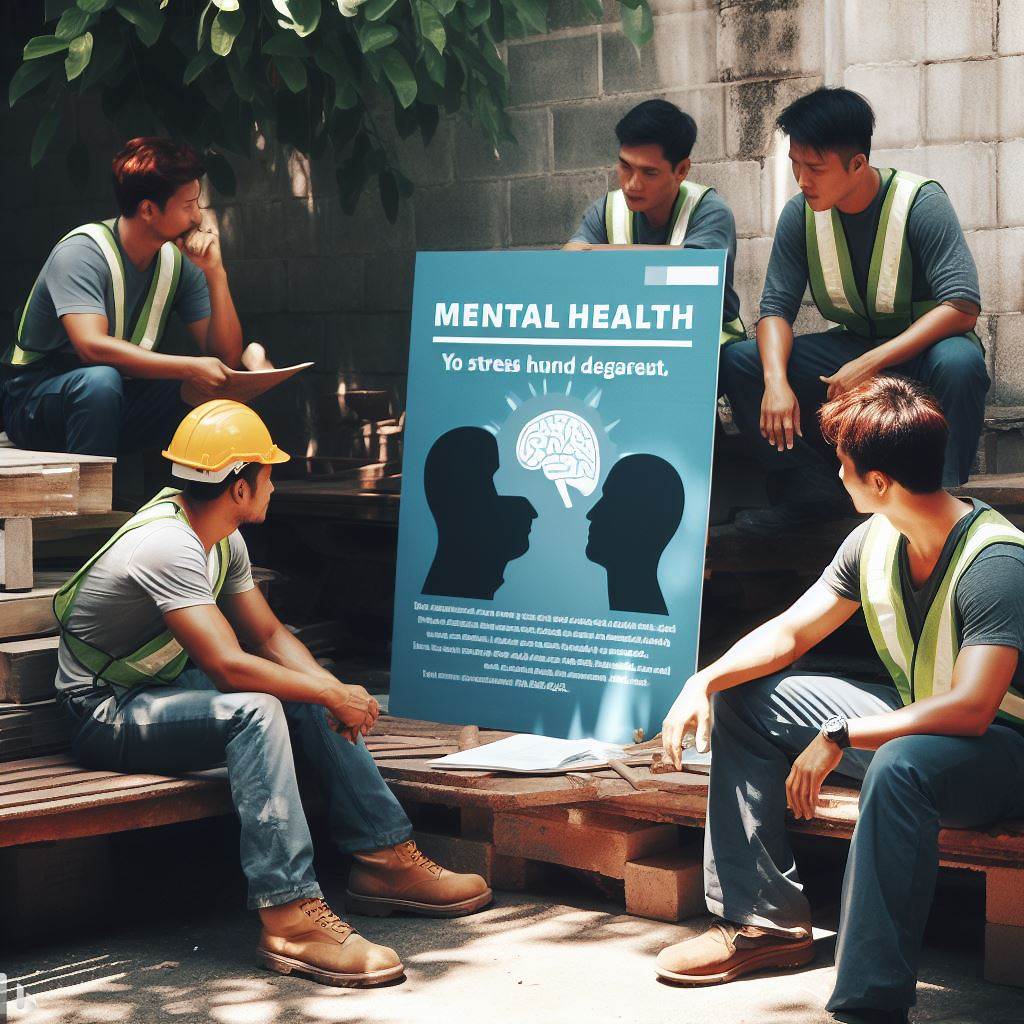Introduction
Eco-friendly practices in construction refer to environmentally conscious methods used in building projects that aim to minimize negative impacts on the environment.
These practices have been gaining traction in the US due to increasing awareness and concern for sustainability.
With the rising awareness of climate change and the need for sustainable development, the construction industry has started adopting eco-friendly practices.
These practices focus on reducing waste, conserving energy, and utilizing renewable resources.
The growing trend can be attributed to several factors.
Firstly, government regulations and incentives have played a significant role in promoting eco-friendly practices in construction.
Building codes and certifications, such as LEED (Leadership in Energy and Environmental Design), encourage builders to incorporate sustainable features into their projects.
Secondly, consumers’ demand for environmentally friendly buildings has increased.
People are now more conscious of the impact of their choices on the environment and are actively seeking greener options.
This demand has pushed construction companies to adapt and adopt eco-friendly practices.
Moreover, technological advancements have made eco-friendly practices more accessible and cost-effective.
Innovations in sustainable construction materials, such as energy-efficient insulation and recycled materials, have made it easier for builders to adopt eco-friendly practices without compromising quality or increasing costs significantly.
Furthermore, the long-term benefits of eco-friendly construction practices, such as reduced energy consumption and lower maintenance costs, are attracting more stakeholders.
Developers and building owners recognize the financial advantages and marketability of green buildings.
In Short, eco-friendly practices in construction are a growing trend in the US.
Transform Your Career Today
Unlock a personalized career strategy that drives real results. Get tailored advice and a roadmap designed just for you.
Start NowDriven by government regulations, consumer demand, technological advancements, and financial benefits, the construction industry is embracing sustainable methods to create buildings that are not only environmentally friendly but also economically viable.
This shift towards eco-friendly practices is a positive step towards a more sustainable and greener future.
Benefits of Eco-Friendly Construction Practices
Environmental Benefits
- Reducing carbon footprint
- Conserving natural resources
- Minimizing pollution and waste
Economic Benefits
- Energy and cost savings in the long run
- Increased property value
- Incentives and tax credits
Social Benefits
- Improved indoor air quality
- Healthier living environments
- Positive impact on communities
Eco-friendly construction practices have gained significant attention in recent years due to their numerous benefits.
Not only do these practices contribute to a cleaner and healthier planet, but they also offer economic advantages and improve social well-being.
Environmental Benefits
Reducing the carbon footprint is one of the essential environmental benefits of eco-friendly construction practices.
By using sustainable materials and energy-efficient techniques, construction projects can significantly decrease greenhouse gas emissions.
Conserving natural resources is another advantage.
Eco-friendly construction encourages the use of renewable materials, such as bamboo and reclaimed wood, reducing the depletion of finite resources like timber and fossil fuels.
Additionally, eco-friendly practices minimize pollution and waste.
Construction sites are notorious for generating large amounts of waste, but adopting sustainable practices helps reduce landfill waste and harmful environmental impacts.
Economic Benefits
Eco-friendly construction practices offer long-term energy and cost savings.
By incorporating energy-efficient designs, buildings consume less energy, leading to lower utility bills for occupants.
This benefit is particularly valuable as energy costs continue to rise.
Furthermore, eco-friendly buildings experience increased property value.
Transform Your LinkedIn into a Job Magnet
Picture recruiters reaching out to you daily. We craft personalized LinkedIn profiles that stand out, boosting your visibility in ways others can't. Elevate your career now.
Upgrade NowAs environmental consciousness grows, the demand for sustainable properties rises, resulting in higher resale values for eco-friendly buildings.
Incentives and tax credits provided by governmental and environmental organizations are additional economic benefits.
These incentives encourage construction companies and homeowners to adopt eco-friendly practices by offsetting initial costs or providing financial rewards for sustainable initiatives.
Social Benefits
Improved indoor air quality is a significant social benefit of eco-friendly construction.
Traditional building materials and techniques often contain harmful chemicals that can impact air quality, resulting in various health issues.
By using environmentally friendly materials, indoor air quality is improved, promoting a healthier living environment for occupants.
Eco-friendly construction also contributes to healthier living environments.
Buildings designed with sustainability in mind prioritize natural light, proper ventilation, and the use of non-toxic materials, creating spaces that enhance occupant well-being and comfort.
Furthermore, eco-friendly construction practices have a positive impact on communities.
Sustainable buildings and developments contribute to the overall aesthetic appeal of neighborhoods, creating an environment that residents can take pride in.
Additionally, these projects often incorporate green spaces and pedestrian-friendly designs, encouraging community engagement and fostering a sense of belonging.
In essence, the benefits of eco-friendly construction practices extend beyond environmental considerations.
With economic advantages, such as energy savings and increased property value, and social benefits, including improved indoor air quality and community well-being, embracing sustainable practices in the construction industry is a growing trend that offers a multitude of advantages for all stakeholders involved.
Read: Diverse Welding Opportunities: From Oil Rigs to Art Installations
Craft a Resume That Tells Your Story
At American Profession Guide, we craft resumes and cover letters that tell your unique professional story. Stand out with documents tailored to your industry and showcase your strengths to land your dream job.
Email UsExamples of Eco-Friendly Practices in US Construction
Sustainable Materials and Design
Use of recycled and renewable materials
The construction industry in the US is increasingly incorporating recycled materials like reclaimed wood, recycled concrete, and salvaged metal into their projects.
By using these materials, they reduce the demand for new resources and minimize waste.
Energy-efficient design and insulation
Builders are now focusing on designing energy-efficient structures that minimize the use of fossil fuels.
The incorporation of proper insulation, advanced glazing, and efficient HVAC systems helps reduce energy consumption and carbon emissions significantly.
Energy-Efficient Systems
Solar power installations
Many construction projects now integrate solar panels to generate clean and renewable energy on-site.
This sustainable energy source helps reduce reliance on the traditional power grid and lowers the carbon footprint of the building.
High-efficiency HVAC systems
Instead of conventional HVAC systems, more eco-friendly alternatives like geothermal heat pumps and radiant heating systems are being used.
These systems consume less energy while ensuring optimal temperature control and indoor air quality.
Water Conservation
Low-flow plumbing fixtures
Water-efficient toilets, faucets, and showerheads are installed in construction projects to conserve water without sacrificing performance.
These fixtures reduce water consumption and subsequently lower water bills for occupants.
Rainwater harvesting systems
To promote water conservation and reduce stormwater runoff, construction projects incorporate rainwater harvesting systems.
These systems collect rainwater from rooftops and store it for non-potable uses such as irrigation, flushing toilets, and cleaning.
Waste Management and Recycling
Construction debris recycling
Instead of sending construction waste to landfills, eco-friendly builders implement recycling programs.
They segregate materials like concrete, metals, and wood for recycling, minimizing the environmental impact and promoting a circular economy.
Proper disposal of hazardous materials
Construction sites often deal with hazardous materials like asbestos and lead.
Eco-friendly practices ensure these substances are safely removed, handled, and disposed of according to regulations.
This protects both workers and the environment from potential harm.
Read: Essential Tools & Gear: Every Construction Worker’s Checklist

Challenges and Opportunities in Implementing Eco-Friendly Practices
Cost considerations and upfront investment
- Balancing initial expenses and long-term savings.
- Ensuring availability and affordability of eco-friendly products.
Lack of awareness and education
- Providing training and education for construction industry professionals.
- Implementing consumer education and awareness campaigns.
Collaboration and innovation
- Fostering partnerships between construction companies, suppliers, and governments.
- Embracing advancements in sustainable construction technologies.
Implementing eco-friendly practices in the US construction industry presents both challenges and opportunities.
This section, we will explore some of the key obstacles that need to be overcome and highlight the potential benefits of embracing sustainable construction.
Cost considerations and upfront investment
One of the primary challenges in implementing eco-friendly practices is the cost involved.
While sustainable construction methods and materials may have long-term cost savings, the initial expenses can be higher than traditional approaches.
However, it is crucial to balance these upfront investments with the potential for reduced operational costs and increased property value in the long run.
Additionally, the availability and affordability of eco-friendly products can pose significant challenges.
It is important to ensure that sustainable alternatives are readily accessible and competitively priced to encourage broader adoption in the construction industry.
Lack of awareness and education
Another obstacle to widespread implementation of eco-friendly practices is the lack of awareness and education.
Construction industry professionals, including architects, engineers, and contractors, may not have sufficient knowledge or training in green building techniques.
Investing in training programs and educational initiatives can equip them with the necessary skills and expertise to incorporate sustainable practices into their projects effectively.
Furthermore, consumer education and awareness campaigns play a vital role in encouraging demand for eco-friendly construction.
Many individuals may not be aware of the benefits of green buildings or sustainable materials.
Educating consumers about the positive impacts on energy efficiency, indoor air quality, and overall environmental sustainability can drive demand for eco-friendly construction and motivate developers to invest in such practices.
Collaboration and innovation
Collaboration among construction companies, suppliers, and governments is essential for the successful implementation of eco-friendly practices.
By partnering with one another, stakeholders can pool resources, share knowledge, and collectively work towards sustainable construction goals.
Such collaborations may involve joint research and development efforts, sharing best practices, and creating industry standards for eco-friendly construction.
Furthermore, embracing advancements in sustainable construction technologies presents significant opportunities for the industry.
Innovations like energy-efficient heating and cooling systems, renewable energy integration, and smart building technologies can enhance the environmental performance of buildings and reduce their carbon footprint.
By adopting these innovative solutions, construction companies can showcase their commitment to sustainability and attract environmentally conscious clients.
While there are challenges to implementing eco-friendly practices in the US construction industry, there are also ample opportunities for growth and innovation.
Overcoming cost considerations and upfront investments, addressing the lack of awareness and education, and fostering collaboration and innovation are key to realizing the potential of sustainable construction.
By embracing eco-friendly practices, the construction industry can contribute to a greener and more sustainable future.
Read: Work-life Balance: A Day in the Life of an American Welder
Case Studies: Successful Eco-Friendly Construction Projects in the US
LEED-certified buildings
LEED-certified buildings, which follow strict environmental standards, showcase the growing trend of eco-friendly construction in the US.
One notable case study is the Bank of America Tower in New York City, which earned LEED Platinum certification.
The tower incorporates numerous sustainable features such as rainwater harvesting, energy-efficient HVAC systems, and green roofs.
Another example is the Bullitt Center in Seattle, a six-story office building that achieved LEED Platinum certification.
The Bullitt Center is fully self-sufficient, generating all its own electricity from solar panels and featuring composting toilets.
Net-zero energy buildings
Net-zero energy buildings have become popular in the US, demonstrating the commitment to sustainable construction practices.
The Research Support Facility (RSF) in Colorado is one such example, designed to produce as much energy as it consumes.
The RSF incorporates advanced energy-efficient technologies, including solar panels, geothermal heating, and natural ventilation systems.
Another case study is the Richardsville Elementary School in Kentucky, the first net-zero energy school in the US.
The school utilizes geothermal heating and cooling systems, solar panels, and energy-efficient lighting to achieve its zero-net energy status.
Green infrastructure projects
Green infrastructure projects aim to minimize environmental impacts and enhance the ecological value of built environments.
One successful project is the Chicago City Hall Green Roof, which transformed a previously unused space into a thriving green oasis.
The green roof improves the building’s energy efficiency and helps manage stormwater runoff, reducing strain on the city’s sewer system.
Another notable example is the High Line in New York City, an elevated park built on a former railway line.
The High Line features native plantings, permeable paving, and rainwater collection systems to promote biodiversity and manage stormwater.
These case studies highlight the diverse range of successful eco-friendly construction projects in the US.
Through LEED-certified buildings, net-zero energy buildings, and green infrastructure projects, the country is making significant progress towards a more sustainable future.
Read: Economic Impact: The Value of Construction Workers in the USA.
Conclusion
Eco-friendly practices in US construction are increasingly becoming a growing trend, and for good reason.
Throughout this blog section, we have highlighted various eco-friendly practices and their benefits.
From the use of sustainable materials to energy-efficient designs, these practices not only reduce the carbon footprint but also save costs in the long run.
The benefits of eco-friendly construction go beyond environmental preservation.
They include improved indoor air quality, enhanced occupant comfort, and increased market value for green buildings.
These practices also promote job creation and economic growth, as the demand for sustainable construction continues to rise.
To ensure a sustainable future, it is crucial to encourage the further adoption and support of eco-friendly practices in US construction.
This can be achieved through government incentives, educational programs, and collaboration among stakeholders.
By prioritizing sustainable construction, we can create healthier and more environmentally responsible communities.
Ultimately, the growing trend of eco-friendly practices in US construction is a positive step towards a greener and more sustainable future.
Let us continue to embrace these practices and work towards a more environmentally conscious society.
Through collective efforts, we can build a better world for ourselves and future generations.




